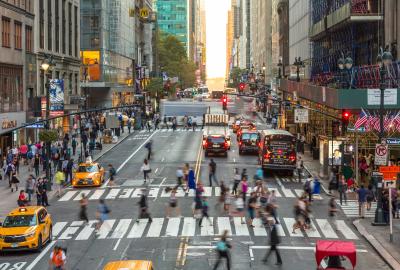June heat wave fits a pattern of increasingly dangerous weather
High school graduations were disrupted last week in Paterson, New Jersey, when the heat index reached 107 degrees, causing more than 150 people attending outdoor ceremonies to fall ill. A South Carolina man died from heat stroke while officiating a youth softball tournament. Nearly 150 million people sweltered as a heat dome lingered for days over nearly half the country, smashing June temperature records from Kentucky to Maine.

The first heat wave of the summer proved deadly and disruptive, and scientists say there are more to come — and not just this summer. Hotter, more frequent and longer heat waves are part of a pattern of dangerous weather that is increasing as the climate gets warmer. Heat poses a particular risk to kids, older people and those with health conditions, but even healthy adults who spend time outside can end up needing medical attention.
Maria Finnegan of Dublin, New Hampshire, picked up her young son early from summer camp last week, as temperatures in normally mild New Hampshire reached 97 degrees. “He gets heat sickness,” she says. “He feels lethargic, he throws up. We have A/C at home, but at camp they don’t. Many of our buildings in New Hampshire don’t have it.”
Finnegan has a chronic illness that is triggered by heat. After spending her childhood in New Hampshire largely without air conditioning — “when Grandma turned it on, it was a big deal,” she recalls — she now has three air conditioning units in her home and is considering buying a fourth.
“I think heat is a blind spot for most people,” she says. “I feel compelled to help people understand the danger. We have to be smarter about this.”
How heat can be dangerous for your health
Kids are among those most at risk when temperatures soar, says Dr. Ashley Ward, who directs Duke University’s Heat Policy Innovation Hub. Ward recently spoke at a webinar about extreme heat and kids’ sports hosted by Finnegan, who works for the climate and clean air advocacy group Moms Clean Air Force.

“Kids in particular are very vulnerable to heat stress, for a lot of reasons,” said Ward. “They tend to be less efficient sweaters and take longer to adapt to heat. They’re also more active in high-risk conditions.”
Activities like football and even marching band, where kids carry heavy equipment, can put additional heat stress on kids’ bodies, said Ward. And common medications, including those for asthma, diabetes, obesity and cardiovascular conditions, she said, can increase the risk of heat-related illness.
While heat itself is dangerous to the body, it can also create more air pollution, triggering asthma and other respiratory issues.
“When temperatures are high, air quality gets worse,” says EDF health scientist Veronica Southerland, who was inspired to record a video about heat while trying to stay cool in a kiddie pool in Earlysville, Virginia last week. “Hot, stagnant air can trap pollution like ground-level ozone and soot,” she explains. “This contributes to asthma, heart disease and other serious health problems, especially for kids and older adults.”
High temperatures, combined with drought, can also increase the risk of wildfires — another air quality threat. Wildfire smoke contains harmful air pollution that can affect people thousands of miles away.
The link between heat waves and climate change
Scientists say that we can expect to see more dangerous heat waves, along with other unnatural weather patterns, as the climate gets warmer due to pollution from burning fossil fuels, which traps heat in the atmosphere.
“It’s more important than ever that we reduce the pollution that’s heating up our planet,” said Southerland.
Much of this pollution comes from power plants, cars and trucks and the oil and gas industry. Yet the Trump administration is attacking EPA protections that safeguard people from the harms of planet-warming pollution.
The past ten years have been the warmest on record, with 2024 the hottest yet. 2025 is likely to be among the top 3 hottest years. A Climate Central analysis finds that human-caused climate change made this heat wave 3 times more likely.
“We’re not used to this heat in New Hampshire,” says Finnegan. “People here are spooked. I met a couple who moved here because it was supposed to be a climate haven, but we don’t have the infrastructure to handle this.”


